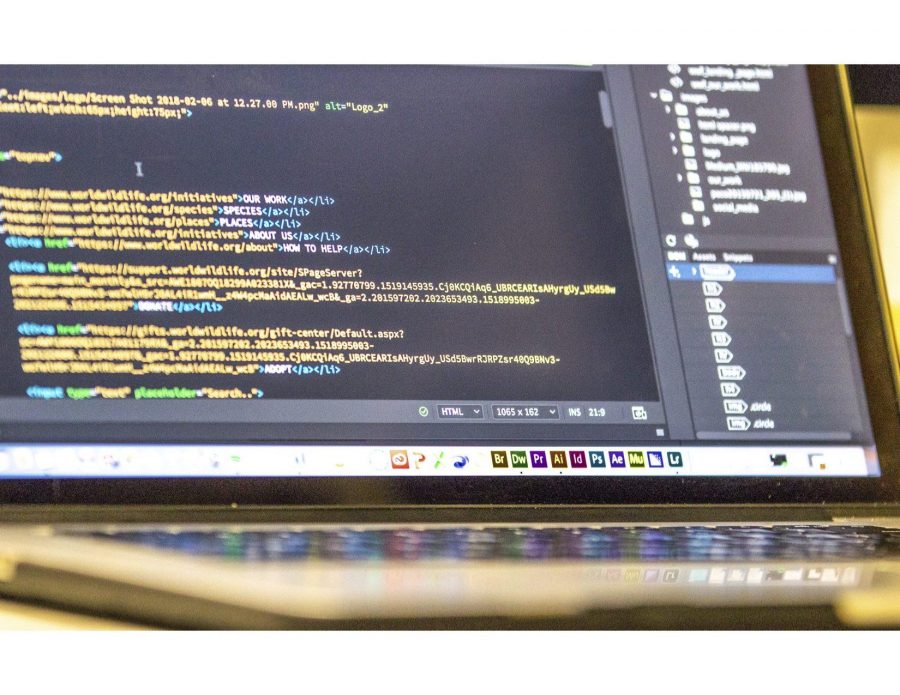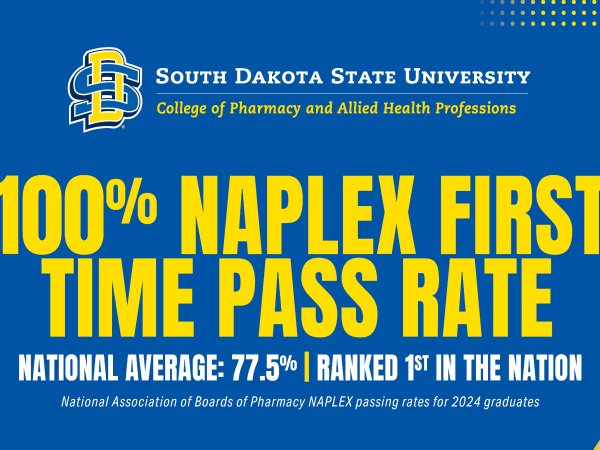If the 20th century was defined by mathematics, the 21st century will be defined by computer code.
In 2015, seven million job openings across the country were in occupations that value computer coding, according to the job market analytics firm Burning Glass.
In fact, programming jobs are growing 50 percent faster than the job market overall. In South Dakota, unfilled computing jobs offer a combined $50 million opportunities in terms of annual salaries, according to code.org.
“Software touches everything in the 21st century,” said George Hamer, assistant department head of electrical engineering and computer science. “The banking industry, health care, the insurance industry – just about every field is computerized.”
Jobs involving coding aren’t only at Google, Apple or IBM, and you don’t necessarily need a master’s degree in computer science to take advantage of them. But, many students in the College of Arts and Sciences are either unaware or don’t understand the positives of learning the language of computers.
Even if your job doesn’t require active coding, Hamer said learning about computer coding will help you approach problem solving differently, analyze data and increase your analytical skills. In the diversifying fields of the 21st century, when computer science and the arts combine on multiple levels, having a common language helps.
“In the big picture, computer science people tend to be right brained and [design] people tend to be left brained,” Hamer said. “The goal is to get them to think the same way and work together.”
To do that, Hamer, alongside former Dean Dennis Papini and current Interim Dean Jason Zimmerman, developed an experimental “targeted course,” to introduce students in the College of Arts and Sciences to coding. The course, called Coding for the Arts and Sciences, was supposed to be offered this spring, but only two people signed up.
“The main reason is probably just lack of advertising,” Hamer said. The class is being retooled, and Hamer hopes to have it available in the 2019 school year.
Coding is used increasingly across every modern industry, and program coordinator of graphic design Young Ae Kim said it helps young graduates stand out to employers, no matter their major.
“I’ve found that fine art students always use a traditional medium to create their artwork and at some point of their career they say they need a website,” Kim said.
Though there are platforms such as Squarespace and WordPress that make webpage creation easy, their premade formats don’t stand out to employers as much as something a student designed themselves, Kim said. Also, having a website that is based on a template can be seen as unprofessional.
Kim believes many students outside of the computer science field are initially “scared” or intimidated by the idea of coding, but with programs such as Adobe Dreamweaver and Muse, personalized webpage and app design are easier than ever.
“If you know how to use Instagram and Facebook, then you can do it,” Kim said. “You basically understand the functionality of these things and you’re doing those same things with a different platform.”
Hamer and Kim are currently discussing a class based on user interface and user experience for next fall, which will focus on teaching students about how things work in web or app environments.
Whether or not students take advantage of these classes, the increasing prevalence of coding in the work industry will not change.
“It’s a skill that everyone needs to master,” Hamer said. “It’s going to become common knowledge in the next decade.”



















